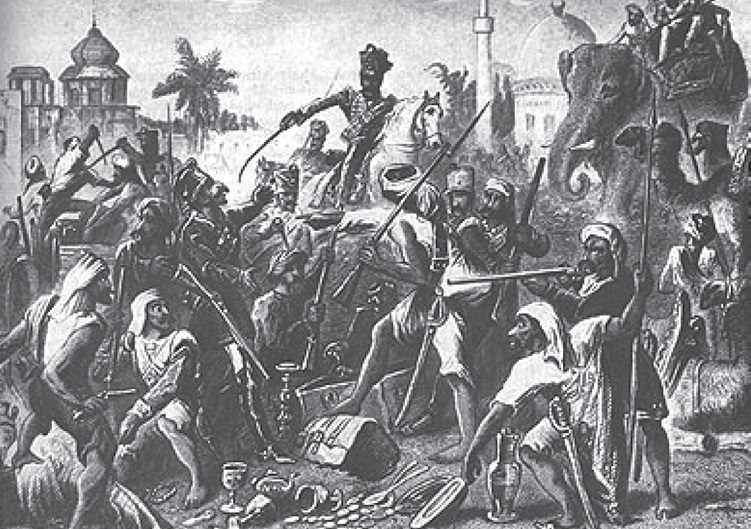From a sow’s ear
Evan Zabawski | TLT From the Editor June 2011
The role of a revolutionary lubricant.

The simple choice to use an inexpensive lubricant helped spark action that ultimately freed India.
Most people know that pigs are largely raised to become food, but not many realize the wide variety of porcine products we use regularly. Aside from gelatin, which is used as a thickener for fruit juice, cream cheese, whipped cream and ice cream, another very common swine byproduct is lard.
Lard is made in a process called rendering where the slaughterhouse byproducts are boiled or steamed to separate the fat from the protein. The fat is skimmed or centrifugally separated with different grades originating from different parts of the pig. Yield is based on the type of pig. Domestic pigs fall into three distinct types based on their end-use: meat, bacon and lard. Lard-type pigs are quite compact and have a high proportion of body fat.
Historically, lard was economically produced for use as a spread and was commonly found in kitchens. Due to its tendency to go rancid, lard was stored in rooms found on the shaded side of a house, thus giving rise to the term
larder to describe a cooled pantry. Seemingly, for health reasons, lard was gradually substituted with butter. Interestingly, lard has less saturated fat, more unsaturated fat and less cholesterol by weight than butter. Lard also has no trans fats, unlike the partially hydrogenated vegetable oils found in vegetable shortening that have largely replaced lard’s use in baking.
One use for lard that has escaped outright substitution is as a lubricant, primarily in cutting oil. Once lard is crystallized or grained, it can be pressed to extract lard oil, leaving solid residue, lard stearin, which is used for shortening. The lard oil has excellent lubricating properties for sawing, drilling, turning, milling, reaming and threading most materials other than cast iron and magnesium alloys. It has a high degree of adhesion, a relatively high specific heat, and its fluidity changes only slightly with temperature. Lard oil is an excellent rust preventive and produces a smooth finish on the workpiece. Today, its relative expense finds it mostly used in combination with mineral oils.
Another use for lard as a lubricant created a tipping point that led to India’s First War of Independence. Since 1757 the British East India Co. Held control over a large portion of India, employing many Muslim and Hindu sepoys—a designation referring to an Indian soldier in the service of a European power. These sepoys were typically armed with muskets, but Britain’s preferred firearm became the Enfield Pattern 1853 Rifle-Musket at the onset of the Crimean War in 1854. By 1856, when the Crimean War concluded, production of rifle cartridges (paper- wrapped powder and bullet, not metallic cartridges) began in Calcutta. Due to the tight fit in the rifle, these cartridges were pregreased with tallow. By the following year, these rifles were issued to the sepoys in India.
To load the rifle, one would bite open the cartridge, pour the powder down the barrel and then ram the cartridge, which included the bullet, down the barrel. Once rumors circulated that these cartridges were lubricated with lard and/or tallow, the atmosphere grew very tense. For the Muslim and Hindu sepoys, allowing themselves to ingest pig or beef products, respectively, is sacrilegious.
The suggestion that these individuals could fabricate their own cartridges using clarified butter—ghee, or vegetable oil, was seen as proof regarding the true origin of the cartridge grease and justified their fears. A further suggestion to simply tear the cartridges open by hand was rejected due to impracticality. The additional rumor that the stiffer paper used to manufacture the cartridge was impregnated with grease fueled distrust.
Shortly afterward, the sepoys mutinied against the British East India Co., and a revolt broke out that ended the company’s 101-year rule of India, which then fell under control of the British Crown for the next 89 years before India finally achieved independence in 1947.
The simple choice to use an inexpensive lubricant helped spark action that ultimately freed a country.
 Evan Zabawski, CLS, is the manager of training and education services for The Fluid Life Corp. in Edmonton, Alberta, Canada. You can reach him at evan@fluidlife.com
Evan Zabawski, CLS, is the manager of training and education services for The Fluid Life Corp. in Edmonton, Alberta, Canada. You can reach him at evan@fluidlife.com.